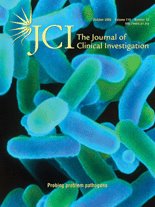
Dr. Sweaney and colleagues from University of California in San Diego published interesting paper about the mechansim of fibroblast-myofibroblast transformation. The paper appeared in Journal of Biological Chemistry (JBC), one of the best and highly credited medico-biological journals J Biol Chem 2006 281:17173-17179. Fibroblast-myofibroblast transformation is a critical event for enhanced extracellular matrix deposition. It involves formation of an actin stress fiber contractile apparatus that radiates from focal adhesions (FA) in the plasma membrane. The researchers used adult rat cardiac fibroblasts to examine distribution and expression of adenyly cyclase (AC), phospho-cav-1, and FA proteins to define mechanisms that link increases in cAMP to caveolin-1 phosphorylation, actin/FA assembly, and fibroblast-myofibroblast transformation. The authors detected AC in both cav-1 and phospho-cav-1 immunoprecipitates, but FA kinase (FAK), phospho-FAK (FAK Tyr-397), paxillin, and vinculin were detected only in phospho-cav-1 immunoprecipitates. Treatment with the AC activator forskolin or a cAMP analog increased cav-1 phosphorylation but decreased FAK Tyr-397 phosphorylation in a cAMP-dependent protein kinase-dependent manner. These events preceded actin cytoskeletal disruption, an effect that was blocked by small interfering RNA knock-down of cav-1. Inhibition of protein tyrosine phosphatase 1B abrogated cAMP-mediated disruption of actin cytoskeleton, cav-1 phosphorylation, and FAK Tyr-397 dephosphorylation. CoLocalizer Pro software was used to make important conclusions about functional significance of phospho-caveolin-1. According to the authors "the data define a novel organization of signaling molecules that regulate fibroblasts: scaffolding of AC by phospho-cav-1 at FA sites in a caveolae-free microdomain along with components that mediate inhibition of actin/FA assembly and fibroblast-myofibroblast transformation via increases in cAMP".







